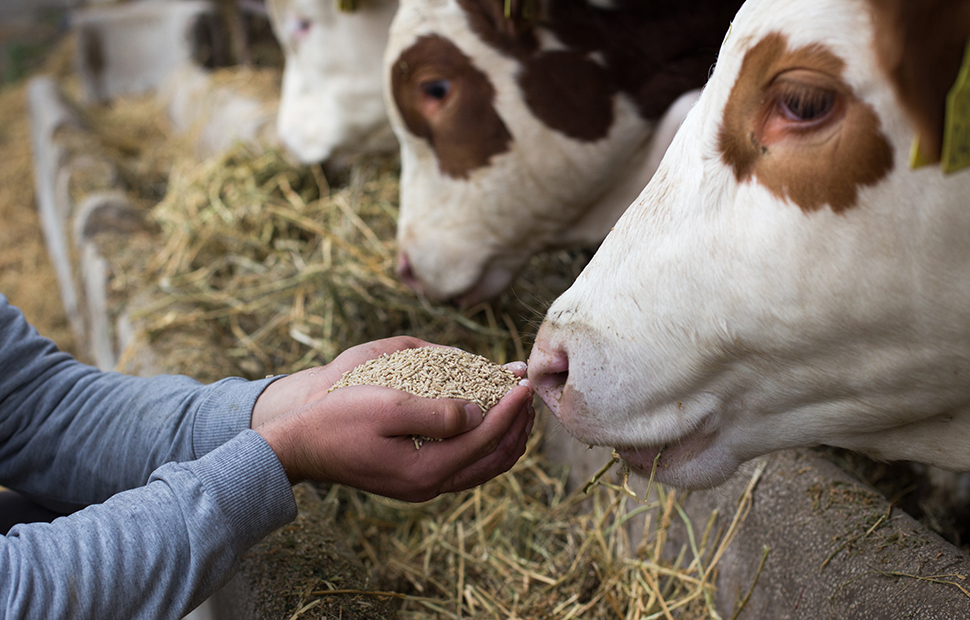Published: 25/11/21 13:29 Categories: Microbiology
The food industry and food safety focus mainly on human consumption products. However, it would be an error to forget animal feed, which makes up a large part of this sector, whose annual figures amount to one billion tons of production and more than a $400 billion turnover.
Animal feed microbiology

Animal feed and welfare can have a major impact on the population, as a nutrient-balanced diet, free from contaminants and harmful substances, will generate animal products that are safe for human consumption. Indeed, animal feed microbiology was born out of pathogen outbreaks such as Salmonella.
Due to the composition and nature of animal feed, it fosters an environment that is conducive to the growth of microorganisms that may be saprophytic, pathogenic or toxic. For this reason, it is necessary to implement a quality management system, not only for food for human consumption but also for animal feed, and that is why ISO standards can be used for both.
There is, admittedly, a wide variety of microorganisms that occur naturally in forages, cereals and seeds, this being the most common route of microbial contamination, that is, from raw material cultivation or harvesting. But this can occur at any stage of animal feed processing, storage or even delivery.
What analysis should be performed?
Therefore, microbial count analysis and Good Manufacturing Practices (GMPs) are essential to ensure animal feed quality. In this regard, General Regulation (EC) 183/2005 establishes the hygiene requirements for these products and states that industry producers are responsible for defining microbiological criteria. Nevertheless, guidelines from both producers and FAO regarding limits are available:
|
Microorganism |
Low limit cfu/g |
High limit cfu/g |
ISO Method |
|
Salmonella spp. |
0 |
>0 |
6579 |
|
Escherichia coli |
<10 |
>50 |
7251 |
|
Enterobacteriaceae |
≤40,000 |
>100,000 |
21528-2 |
|
Molds and yeasts |
<20,000 |
>70,000 |
21527-1; 21527-2 |
|
Clostridum perfringens |
≤10 |
>100 |
7937 |
Other microorganisms that are recommended for analysis depending on the nature of the product are:
- Escherichia coli O157
- Campylobacter spp.
- Listeria spp.
- Aspergillus spp.
- Coliforms
- Staphylococci
It should be pointed out that not all microorganisms have a negative effect on these products. An example is silage, in which lactic acid bacteria (LAB) are used to promote the production of lactic acid, which helps in pH reduction, which preserves forage and its nutritional properties. These microorganisms, besides being harmless to animals, could act as probiotic products, according to some researches.
And what about you, what analysis do you perform on your animal feed products? If you need information on techniques or products for animal feed analysis, do not hesitate to contact us.

 Food fraud: How do we detect it?
Food fraud: How do we detect it?
 Visit Us at MEDICA 2025 – Discover Our Precise Detection Solutions
Visit Us at MEDICA 2025 – Discover Our Precise Detection Solutions
 PCR: The Technique Revolutionizing Rapid Detection in the Food Industry
PCR: The Technique Revolutionizing Rapid Detection in the Food Industry
 How Culture Media Ensure the Safety, Efficacy, and Quality of Medicines
How Culture Media Ensure the Safety, Efficacy, and Quality of Medicines
 Meeting us at MEDLAB MIDDLE EAST 2025
Meeting us at MEDLAB MIDDLE EAST 2025